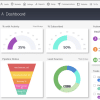This week, our Person of the Week spotlight shines on Jonas Bordo, co-founder and CEO of Dwellsy, the Los Altos, California-based residential home rentals marketplace, and co-author of the upcoming book “Everything You Need to Know About Renting But Didn’t Know to Ask: All the Insider Dirt to Help You Get the Best Deal and Avoid Disaster.” The subject of our conversation is the single-family home rental market.
The first question is a broad question: What is the overall state of today’s single-family home rental market?
Great question. Overall, I would say it’s very robust. It’s got a pretty staggering upward trend in terms of rent, and I think that’s driven by a couple of different things.
We’ve seen a massive change in consumer preferences over the past few years, and a lot more people are interested in renting single-family homes. And so, we’ve seen substantial increase in demand, while at the same time supply has not grown at the same rate. That meant prices have gone up quite materially.
Why have people been more interested in going after a single-family home rental as opposed to apartment rentals?
It started with Covid. If you go back a couple of years, as we all went into lockdown and started working from home, bought pandemic pets and spent a lot more time in our homes. This started to push a desire to be in single-family homes. But as we’ve come out the other side, we’re still looking at radically lower numbers of people working from their offices and a lot more people working from home. This necessitates more space, or at least it gives preference for more space.
Plus, as long as you’re able to work from home, you might choose to live elsewhere. For example, you could put the same amount of money to work in New York City on a one-bedroom apartment as you could renting a three-bedroom house in Connecticut. As long as you don’t need to commute to New York every day, then that works out pretty nicely.
Is the supply for single-family rental houses keeping up with the demand?
There is a new development in single-family rental homes of what the industry calls “build to rent,” which are entire communities of single-family homes being built just for rentals. That’s a relatively new trend – I don’t think I’d ever heard of that five years ago.
I just went to a conference about build to rent where there was pretty healthy attendance – lots of people are building good communities in that space. But the vast majority of rental housing in this country is legacy – it was not intended to be built for rental.
In your new book, you write about the 10 most expensive big cities for three-bedroom single-family home rentals and it’s difficult not to notice that these are all coastal cities – although one of them, Honolulu, is coastal by being in the middle of the ocean. But what about the rest of the country? Why aren’t those markets as expensive?
There’s a couple of different reasons for this. The coastal markets have historically been the most expensive from a rental standpoint and the hardest to build new supply in. So, they are the most constrained and we’ve seen people within those communities trading up for larger spaces, larger homes, moving from apartments to single-family homes. So that’s driven the cost up there.
We have seen rents go up in certain areas in the middle of the country. They are much more oriented towards being able to meet the needs that are there. Right now, if you look at Des Moines, Iowa, for example, it’s very healthy rental market where they’ve done a good job of building at a rate that is in keeping with demand. And that’s kept rents down.
If we were to have this conversation one year from today, where would you see the single-family rental market?
I think we should see some significant rent increases again this year, something in the order of 5% to 8%, which is well above historical norms. But I’m seeing continued demand for those assets and continued pressure on rent with no supply coming to meet that demand. That doesn’t mean no building – I just mean that there’s not a material source of new inventory. For example, in the multifamily side we’re seeing record levels of deliveries of new multifamily properties for rent.
That’s not the case on the single-family side – we’re seeing relatively normal levels of delivery for single-family homes. and that’s even maybe down a little bit off of what normal levels are.
And that’s largely driven by the challenges that people are facing getting mortgages – because and other things that cause builders to pause on building for the for-sale market. And with less building for the for-sale market, that means less future rentals available because very few single-family homes are built for rent out of the gate.















